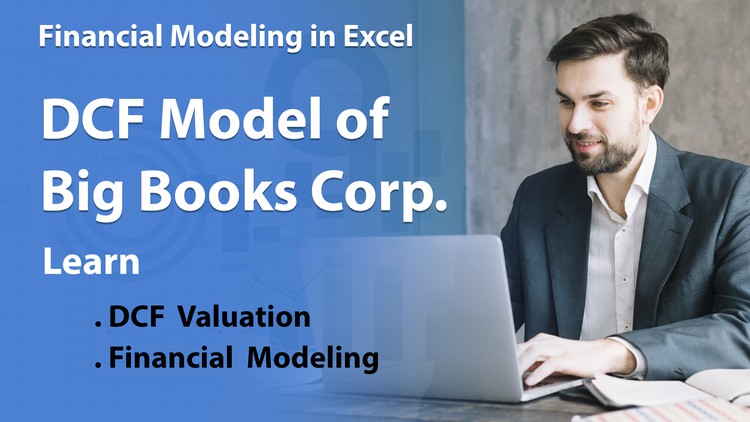
Learn Financial Analysis, DCF Valuation and Financial Modeling of Big Books Corp. from scratch
What you will learn
Discounted Cash Flow (DCF) Modelling
You Shall Understand valuation Techniques Right From Scratch on a Financial Model.
Learn model construction, assumptions, advanced excel functionality, error trapping, sensitivity analysis, presentation of model output, and pro tips and tricks
This Course Gives a Brief idea about the Revenue and Cost Drivers, Forecasting the Future Financials and the Stock Price Recommendation.
Become a successful Financial Analyst
Excel shortcuts, Formulas, Formatting and Number Formatting
This Training is Dedicated to Learning about this most commonly used DCF Valuation Techniques.
Description
Any one interested in a career in Finance and Financial Analyst Industry, This course is a must. Many students and professionals assume that their chances of making an Analyst career in Finance Industry are bleak if they are not from the top tier colleges. However, we have seen industry trends where skilled students and professionals from lesser known universities and companies making into big financial firms and organizations. Universities are very limited in their curriculum as they are mostly restricted to focus on theoretical aspects than actual practical know-how. Financial Analyst Training involves analyzing companies’ financials in detailed manner. Analysis is conducted through a composite of financial records, news and interviews with company insiders. It is also known as securities research or Fundamental Analysis. It consist of the sell side research i.e. when research done by analyst are provided to their clients and also buy side research i.e. when analyst do research and use it to invest their firm’s money. The work within Financial Analysis mainly revolves around Financial Modeling Techniques, forecasting, valuations like DCF and Relative Valuations (estimate growth rate and valuations for companies in future). Financial modeling involves designing and building calculations to assist in decision-making. Learning how to build models with complexity in an accurate, robust, and transparent way is an essential skill in the modern workplace. The goal isn’t to teach you how to memorize Excel Models but to actually learn the skills to generate your own reports with a clear idea of how to structure a financial report so it has maximum flexibility. And by the end of this course, you will learn how to build effective, robust, flexible financial models. In this you will learn the following:
- Valuations in details
- Financial Modeling where in we will study in details the balance sheet, income statements, cash flow, projections etc along with the financial model in practical.
Content